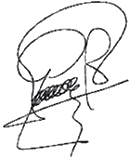At the time of writing, we believe that the most relevant thing that is happening in Europe is the profound crisis (systemic and structural, it seems) affecting German pig production and that of its neighboring countries (mainly the Netherlands and Belgium, collaterally also Denmark).
Indeed, since June of last year, the price of pigs in Germany has been below their cost price. To make matters worse, so far this year, the price of feed has skyrocketed. Add to this the fact that there is a serious labor shortage in German slaughterhouses and cutting plants (apparently unresolvable at the moment) and we get the right perspective on the seriousness of the crisis. The German live price right now is equivalent to €0.97/kg. The financial situation of pig farmers is unsustainable and the German government has already taken action. Some large retail chains have announced that they will prioritize the purchase of 100% German pork. We are aware that this initiative (restrictive of trade within the EU, in clear opposition to the fundamental principles of the European Common Market: free movement of goods, among other things) is already affecting and interfering with trade. Whether we like it or not, it is the introduction or imposition of a trade ban. A ban in every sense of the word. Some large Spanish slaughterhouses are already wondering where they will place their loins... This is a good issue for Spanish industry organizations and competent authorities to work on.

Years ago France came up with the VPF label (viande de porc française = French pork) which, with varying degrees of success, has managed to continue to be around today. This unprecedented German initiative is part of the same philosophy: outdated economic protectionism and chauvinism which, in our opinion, clashes head-on with the spirit of the European Free Market. We thought that protectionism was a medieval concept... but it appears not to be the case. We will have to keep a close eye on developments. Let us hope that the mechanisms the EU has to supervise and control the conduct of Member States will act and be vigilant. Nothing happens by chance.
In Spain, September saw a continuation of the downward trend. Reluctant declines, controlled declines, insufficient declines, but more significant declines than in August. What we announced fifteen weeks ago: "pig prices in Spain can do nothing but go down, keep going down and continue to go down..." has been scrupulously fulfilled one hundred percent; there have been 15 consecutive weeks of decline. The differentials with Europe persist, but we will dive deeper into this fact in the next commentary. Let's highlight the importance that the Spanish price has only been below cost price for a few weeks.
No matter how efficient Spanish slaughterhouses are, it is not possible for them to remain outside the reality of the market within the EU. September is ending with the heaviest pigs in history (in the same weeks) and with record slaughterings that barely absorb the more than abundant supply of live pigs. Pork continues to sell with great difficulty.
It is expected that in October we will reach - at last! - the bottom of these cascading declines (it will depend on whether more significant drops happen in the meantime). Let's remember that without China as a destination, slaughterhouses are forced to look for alternative markets, and this task is not proving to be easy. All efforts are devoted to this: to broaden export horizons.
We believe that when the price reaches its lower limit (1.02 perhaps?), several circumstances could come together to mitigate the crisis or help to overcome it. It is quite possible that attractive prices will trigger speculative buying - which could be massive. It is also possible that China will renew some of its import activity: the cheap prices will not leave it indifferent. The passage of time will also have helped in the search for new markets; nothing can be ruled out. It is also to be expected that the trade-restrictive effects of COVID will be waning... This cocktail could allow us to see the light at the end of the tunnel.
Ideally, it would be a question of "building a bridge" between the end of October and the pre-spring period. One way or another, the European market should regain its stability by then. Probably at the cost of sacrificing tens and tens of thousands of sows. In the absence of China, the only solution is to reduce the herd. And the reduction will take place most drastically where farmers' losses have been the greatest.
Let's hope that in October some of the unknowns will become clearer.
According to the great Aristotle: "Hope is a waking dream." Let's hold onto hope.
Guillem Burset




